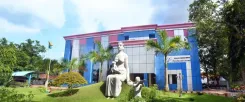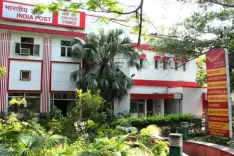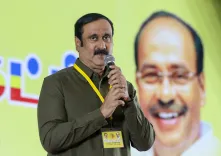How is CM Yogi Leading the Flood Relief Drive in Uttar Pradesh?

Synopsis
Key Takeaways
- CM Yogi Adityanath is leading the flood relief efforts in Uttar Pradesh.
- Ministers are actively engaging with affected communities.
- More than 900 flood shelters are operational.
- Over 84,000 individuals have been affected by the floods.
- Emergency measures prioritize food, water, and medical care.
Lucknow, Aug 3 (NationPress) As floodwaters continue to cause significant disruptions across vast regions of Uttar Pradesh, the state administration has escalated its relief and rescue efforts under the vigilant guidance of Chief Minister Yogi Adityanath.
Following his directives, ministers have dispersed throughout the most affected districts, personally examining relief camps, interacting with victims, and ensuring that assistance reaches every impacted household promptly and compassionately.
The Chief Minister has stressed that this is a moment for empathy and steadfast public service, affirming that no resources will be spared to safeguard lives and restore normalcy.
His mantra—“Government to Every Victim”—serves as the guiding principle for the ongoing operations, which are being conducted by the State Disaster Response Force, National Disaster Response Force, and Provincial Armed Constabulary in close collaboration with district administrations.
On Sunday morning, Cabinet Minister Swatantra Dev Singh visited Jalaun and Hamirpur, where he surveyed submerged areas and assessed relief camps.
He directed officials to guarantee uninterrupted access to clean drinking water, food, electricity, medical assistance, and sanitation facilities.
In Prayagraj, Minister Nand Gopal Gupta ‘Nandi’ surveyed the flood situation via boat, distributed aid, and instructed officials to expedite rescue operations and enhance camp infrastructure.
Minister of State Dharmveer Prajapati journeyed to flood-affected villages in Etawah, navigating submerged areas by boat to engage with residents directly.
He evaluated the availability of food, water, medicines, and fodder for livestock, underscoring the necessity for transparency and promptness in all relief efforts.
In Ballia, Dayashankar Mishra ‘Dayalu’ inspected embankments along the Ganga, reviewed boat readiness and health services, and mandated continuous monitoring of at-risk areas.
Sanjay Gangwar, Minister of State, visited camps in Jalaun, distributed vital supplies, and urged medical teams to remain vigilant against waterborne diseases.
He highlighted the importance of addressing every concern raised by victims without delay.
In Varanasi, MLA and former Minister Dr Neelkanth Tiwari actively delivered relief materials to families in Konia and Rajghat, reaching them by both boat and on foot.
Each household received food grains, tarpaulins, sanitary products, and other essentials.
He instructed officials to ensure a consistent supply of milk, fruits, and tea in camps and asked local law enforcement to patrol regularly to deter theft.
As per official reports, floods have impacted over 84,000 individuals across 402 villages in 37 tehsils.
Seventeen districts—including Prayagraj, Varanasi, Ballia, Jalaun, Hamirpur, Etawah, and Fatehpur—are currently facing elevated water levels and displacement.
More than 900 flood shelters are operational, accommodating over 11,000 displaced individuals. Relief initiatives include distributing over 76,000 lunch packets, 6,500 food kits, and deploying 757 health teams.
Nearly 500 boats and motorboats are being utilized to reach stranded populations, while embankments and flood posts are under constant scrutiny.
Chief Minister Yogi has dispatched an 11-member ministerial team to oversee operations in the severely affected districts.
He has instructed district magistrates, superintendents of police, and chief medical officers to remain present and ensure 24/7 monitoring.
The government has also prioritized the safety of livestock, relocation of animals, and veterinary care.
Aid for farmers affected by crop loss and land erosion is being processed within 24 hours, with strict guidelines to uphold quality and transparency in distribution.
As rivers like the Ganga and Yamuna persist in flowing above danger thresholds in several districts, the state's response remains centered around urgency, compassion, and accountability.
The forthcoming days will challenge the resilience of both the administration and the populace, yet the government has pledged to stand resolutely with every citizen during this critical time.






